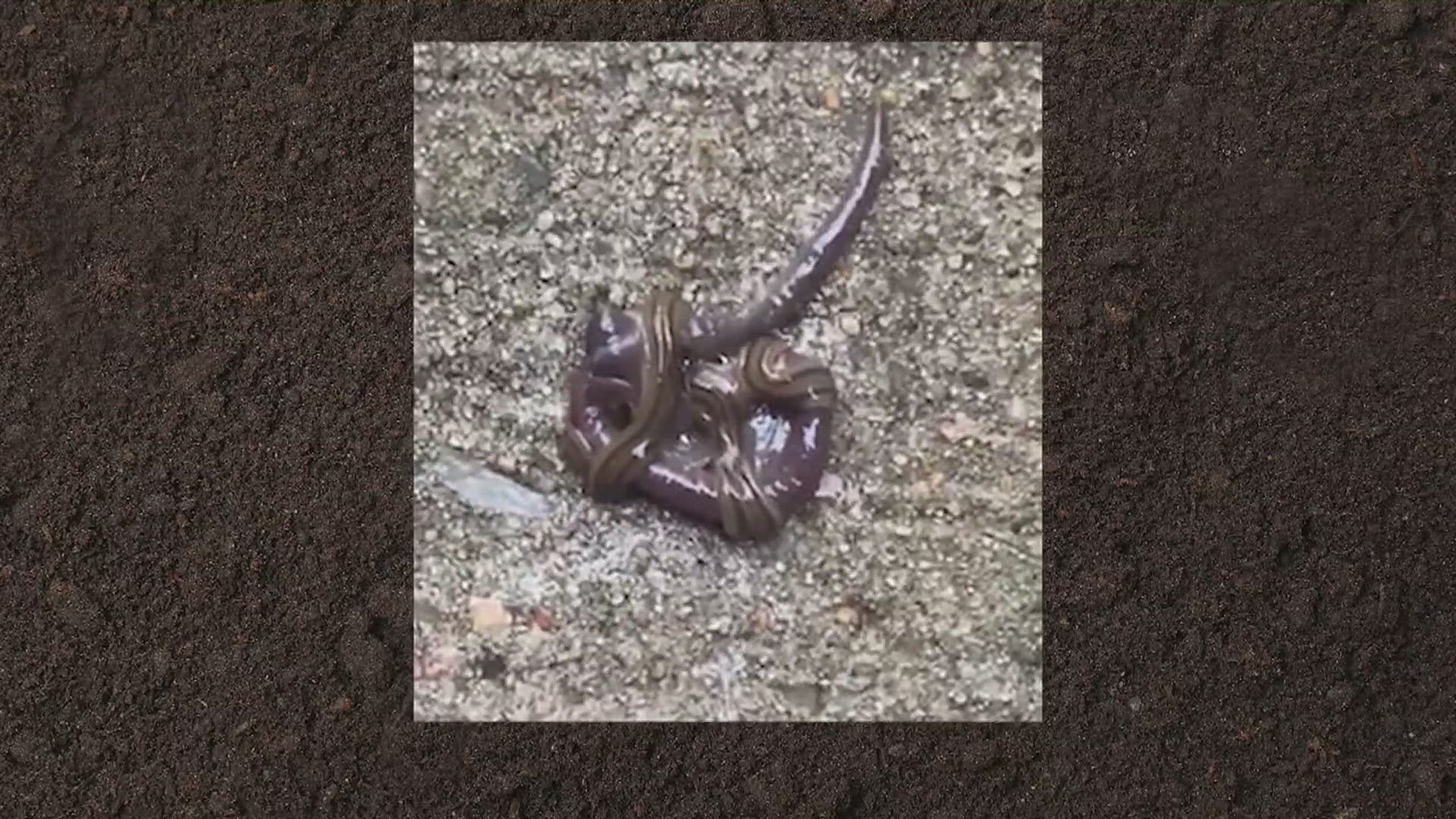MOLINE, Ill — Have you heard of the hammerhead worm?
They're technically not 'worms' as we know it, but rather, planarians. The hammerheads were most likely introduced to the U.S. in 1891 and thought to have come from southeast Asia. The first reports of these creatures come from Urbana, Illinois, in 1997. Since then, they're mostly found in the southern U.S., but have been reported everywhere from Texas, Missouri and even in Canada.
These worm-like beings get its name from a flat, shovel-shaped head that resembles the hammerhead shark. You can also note stripes running down its body. Hammerhead worms are often found in moist areas, such as under rocks and logs, in mulch or leaf litter.
Like other planarians, the hammerhead worm cannot be defeated by chopping it in half. The two sections will then become two distinct worms. It's actually one method of reproduction for the hammerhead. It will break off a small section of its body, near the tail, which will develop a head and become a new worm.
And to make matters even trickier, they're covered in the same paralytic neurotoxin found in pufferfish. It will make you and your pets sick if the hammerhead comes in contact with the skin.
Since moving into northern Illinois, the hammerhead has been known to eat all sorts of snails and slugs. But its favorite meal is other worms, including the helpful earthworm and the invasive jumping worm. This diet can have an impact on local farms and gardens.
"This year, there have been 73 identified here in Illinois," Jamie Viebach, horticulture educator for Illinois Extension said. "I checked the Quad Cities area and didn't see any reports there. But north of you, in Galena, and in nearby Dixon, there have been reports."
Viebach says the best way to dispose of any hammerheads is to put them in a container or ziplock bag with alcohol, vinegar or salt. Then throw the bag in the freezer for good measure.
You can find more information on invasive species throughout our region at the University of Illinois Extension's Invasive Species website.
Tune into The Current from 4 to 5 p.m. on weekdays to catch live interviews impacting you, your family and your hometown as well as all of the biggest headlines of the day.

